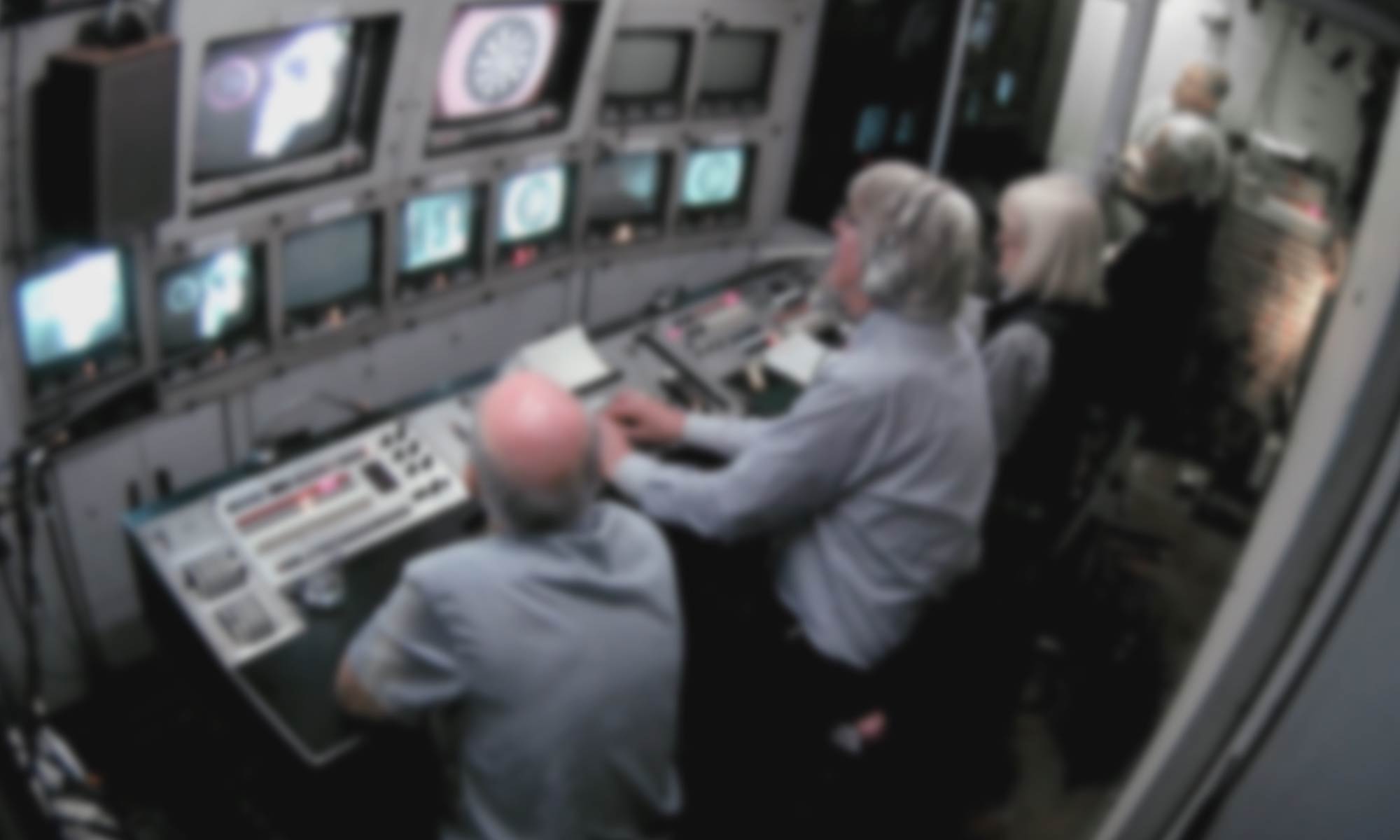by John Ellis, Royal Holloway University of London
Originally published on http://mediacommons.org/imr/content/bringing-old-equipment-back-life
Curator’s Note
How did TV get made in the analogue era? Now that huge amounts of archival TV have been digitized, this has become an urgent question. There’s only so much that you can learn from looking at old equipment, and even less from photos of it. The archives themselves contain very few programmes explaining how TV used to work. Fortunately, many of the professionals from the fifties onwards are still around, and there is an international network of collectors who still maintain “obsolete” equipment in working order.
For the ADAPT research project, we seized this time-limited opportunity to reunite working equipment with the professionals who once used it. We challenged them to make a programme as they used to. We used contemporary ‘fixed rig’ video methods (14 cameras for one shoot) to produce over 160 videos in all. They show how TV professionals in the UK filmed and edited using both video and 16mm film. The processes of both video and film are explained at www.adapttvhistory.org.uk, and all the videos can be downloaded from the repository at https://figshare.com/collections/ADAPT/3925603
We have extraordinary revelations: how quickly and economically a film crew used to work; the sheer difficulty of getting a live show on air; the crucial importance of repair and maintenance; the time and effort it took to line up cameras. We see how the Éclair camera and Nagra sound tape recorder revolutionised what was possible with 16mm filming. We see how one (energetic) person can run an entire film lab. Our footage enables a comparison between film and videotape editing, as well as an appraisal of AVID’s early digital system. It shows the combination of many different items of equipment that were required to make the simplest of sound and image material — the heavy cables, the cumbersome tapes, the long waits for equipment to warm up.
We concentrated on the everyday production of everyday TV, to present examples that were as typical as possible. The equipment used is mainly British or European, and the professionals involved had all once worked for the BBC. But around the world, the work routines and the basic arrays of equipment were similar even then. Many of the crews interact in ways that are startlingly similar to those reported by Beth Bechty in her ethnographic studies of US freelance film crews in the early 2000s. They show the same rituals of exaggerated politeness and mutual respect. The biggest difference is in the social composition of the professional group we were calling on: they were overwhelmingly male and white.
The equipment (and some attitudes) may be retro, but our work is no exercise in historical recreation akin to a Civil War battle recreation. Instead it is a combination of hands-on history and memory work. These professionals recall past actions that, more often than not, are deeply embedded in body memory. The additional challenge to create again brings forward all their professional skills. The participants are ‘playing’ their younger selves, encountering long abandoned equipment: “Come to Daddy” says one of the cinematographers unselfconsciously on picking up the Éclair camera.
Our videos are edited to different lengths: bitesized two minutes that can be used in a lecture, medium lengths for seminar use, and full length versions for research and concentrated study. Taken together they show clearly why archival TV is as it is: they reveal the strengths and limitations of a whole, lost, era of television production. It was an era when filming was not the commonplace activity it is now: it involved scarce resources, large expenditure, individuals with highly specialized skills. The decision to film was a weighty one that involved considerable planning. When you watch these professionals at work, and see their demonstrations of the equipment they wrestled with, it seems remarkable that they achieved so much.
This material can serve as a guide for those students and researchers fortunate enough to have access to hands-on collections of old equipment. They can help decode the mysteries of circuitry and reveal the industry work-arounds. It is also a miracle that this equipment is still in working order, and this is due to the dedicated private collectors, the owners and maintainers. Museum display equipment may look spectacular, but if it is not maintained, it no longer works and loses its ability to speak to us. Our material is intended to restore at least some of that ability, to bring the retro back to life.
